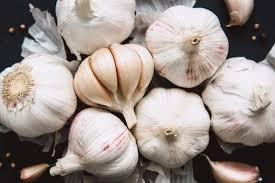Garlic Market Participants Compete On Quality Certifications And Export Strategies

The garlic market has become increasingly competitive, with participants focusing on quality certifications and robust export strategies to capture global share. As consumer preferences evolve and import standards tighten, producers are aligning operations with internationally recognized benchmarks to ensure market access and premium positioning.
Quality Certifications Emerge as Key Differentiators
Certifications such as USDA Organic, GlobalG.A.P., ISO 22000, and HACCP are no longer optional for garlic exporters—they are vital tools for credibility and market entry. In regions like the European Union, North America, and parts of Southeast Asia, buyers require certified assurance of food safety, environmental sustainability, and traceability.
These certifications validate production practices, from the field to the packaging line, and reassure retailers and consumers about the product’s origin and handling. In many cases, garlic that meets such standards enjoys better pricing and consistent demand.
China, the world’s largest garlic producer and exporter, has made considerable progress in scaling up certification efforts. Leading Chinese exporters now prominently feature food safety labels and QR-code traceability on bulk and retail packaging. Similarly, exporters from India, Argentina, and Egypt are focusing on certifications to meet the demand of high-regulation markets like Japan, South Korea, and the UAE.
Export Strategies Adapt to Regional Market Preferences
Export success in the garlic industry depends on tailoring strategies to individual market dynamics. For example, fresh garlic remains the dominant form in Asian countries, where it is a staple cooking ingredient. Meanwhile, European and North American markets are increasingly shifting toward value-added garlic products like pastes, powders, flakes, and dehydrated segments.
Producers are aligning export volumes, processing formats, and packaging standards to meet this diversified demand. Moreover, exporters are studying phytosanitary requirements, shipping preferences, and seasonal import windows to optimize delivery.
Some suppliers are even working closely with foreign distributors and foodservice providers to customize garlic specifications, such as clove size, moisture content, and skin tightness. This precision export approach is paying off in markets with strict regulatory and aesthetic standards.
Logistics, Cold Chain, and Trade Compliance in Focus
Efficient cold chain logistics and adherence to trade regulations are increasingly integral to garlic export strategies. Shelf life is a major concern, especially for fresh garlic shipped across continents. Temperature-controlled storage, humidity regulation, and protective packaging are essential to preserve quality and prevent spoilage.
In response, garlic exporters are investing in upgraded warehouses, refrigerated shipping containers, and just-in-time inventory systems. Logistics partnerships with third-party carriers and port operators have also improved handling efficiency.
Meanwhile, producers must ensure full compliance with phytosanitary certifications, customs declarations, and packaging labeling laws of target countries. A minor violation can result in delays, rejections, or even bans from lucrative markets. As a result, large exporters often employ specialized trade compliance teams or partner with export consultants.
Country-Level Export Performances Drive Competition
Different countries are emerging as garlic export hubs depending on their production strengths, seasonal advantages, and trade alliances. For instance:
-
China dominates fresh garlic exports due to massive scale and low-cost production. It exports to over 130 countries, including Brazil, Indonesia, and the Philippines.
-
Spain holds a strong position in the EU garlic market, benefitting from both climate and high regulatory compliance.
-
India is expanding in the dehydrated garlic segment, targeting North America and Middle East markets.
-
Egypt and Argentina are growing as alternative sources for buyers seeking to reduce dependence on Chinese supply.
Trade agreements and geopolitical dynamics also influence export momentum. For example, tariffs imposed on Chinese garlic in some Western countries have opened doors for exporters from India and Southeast Asia. Similarly, improved diplomatic ties and trade treaties between South American nations and Asia-Pacific countries have boosted garlic flows.
Branding and Value-Addition Bolster Export Appeal
Garlic exporters are moving beyond bulk commodity models by embracing branding, storytelling, and packaging innovation. From “sun-dried Himalayan garlic” to “Spanish purple garlic” with protected geographical indications (PGIs), value-added marketing is helping differentiate products in crowded shelves.
Private labels, boutique spice brands, and e-commerce platforms are giving exporters an avenue to present garlic not just as an ingredient, but as a lifestyle product linked to heritage, health, and taste. Attractive packaging, recipe ideas, and eco-friendly wrapping further improve shelf appeal and consumer connection.
Additionally, garlic exporters are introducing niche innovations such as fermented black garlic, smoked garlic, and infused garlic oils—further widening their market reach and justifying premium pricing.
Investment in R&D and Digitalization Supports Export Goals
Export-oriented garlic companies are investing in research and development to improve shelf stability, reduce post-harvest loss, and enhance varietal performance. Hybrid garlic strains with longer shelf life and disease resistance are being developed in India, the U.S., and parts of Africa.
Digital tools are also playing a vital role in streamlining exports. Smart sensors for storage monitoring, blockchain for traceability, and AI-based demand forecasting are all being integrated to boost reliability and responsiveness.
Online B2B platforms and digital trade fairs have emerged as efficient tools for exporters to connect with global buyers. These virtual spaces allow small and mid-sized garlic businesses to bypass intermediaries and showcase their capabilities directly to retailers and wholesalers worldwide.
Outlook: Strategic Positioning Will Define Future Leaders
As the garlic market becomes increasingly globalized and quality-conscious, those participants who proactively adopt certifications and well-targeted export strategies will gain lasting competitive advantages. Compliance, logistics, customization, and innovation are no longer optional—they are essential pillars of success.
With rising consumption in health-focused economies and growing cross-border trade, garlic producers who invest in quality, traceability, and strategic outreach are poised to thrive in the evolving global food landscape.
- Art
- Causes
- Crafts
- Dance
- Drinks
- Film
- Fitness
- Food
- Jeux
- Gardening
- Health
- Domicile
- Literature
- Music
- Networking
- Autre
- Party
- Religion
- Shopping
- Sports
- Theater
- Wellness


